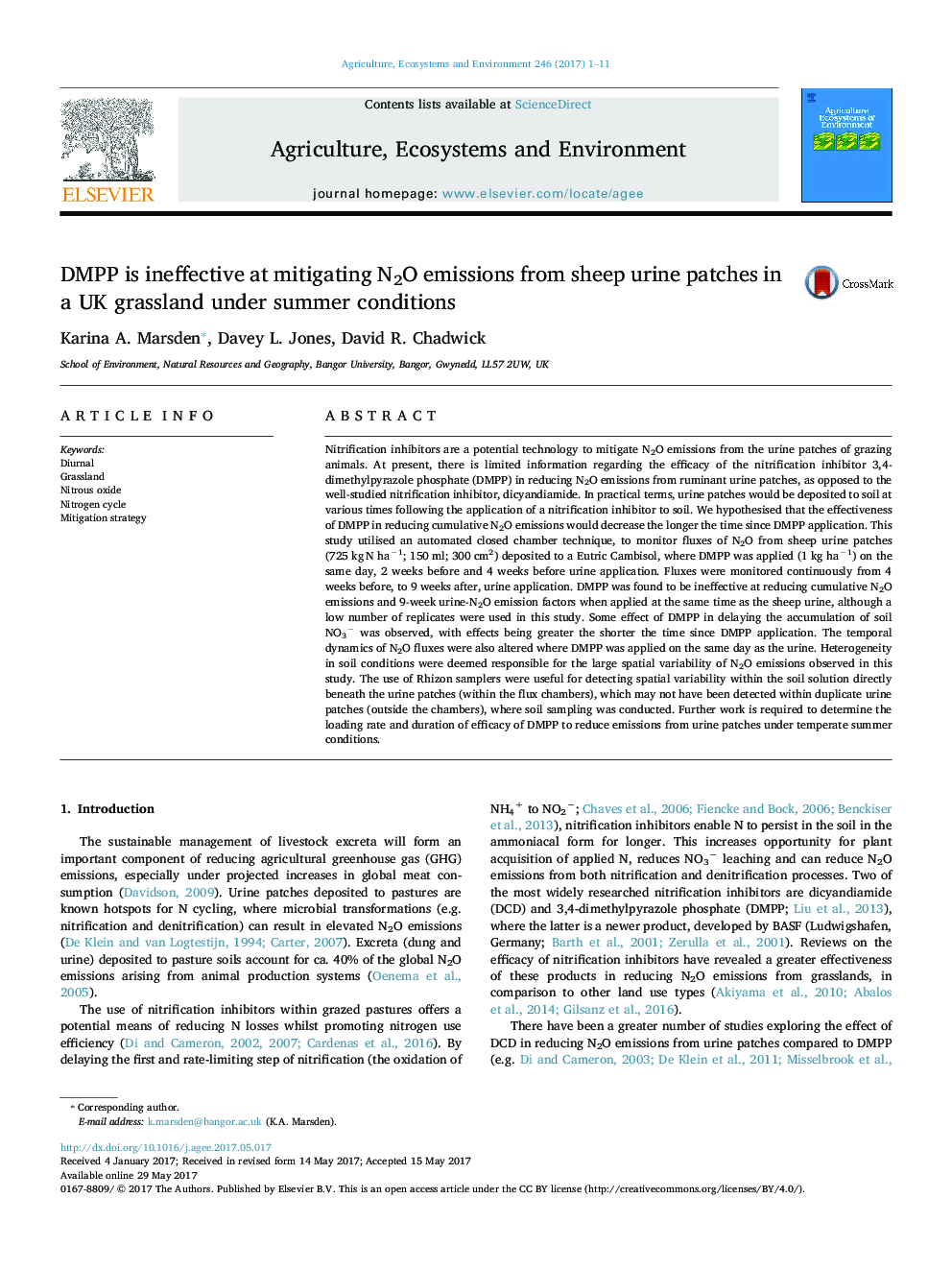| کد مقاله | کد نشریه | سال انتشار | مقاله انگلیسی | نسخه تمام متن |
|---|---|---|---|---|
| 5538022 | 1552006 | 2017 | 11 صفحه PDF | دانلود رایگان |
عنوان انگلیسی مقاله ISI
DMPP is ineffective at mitigating N2O emissions from sheep urine patches in a UK grassland under summer conditions
دانلود مقاله + سفارش ترجمه
دانلود مقاله ISI انگلیسی
رایگان برای ایرانیان
کلمات کلیدی
موضوعات مرتبط
علوم زیستی و بیوفناوری
علوم کشاورزی و بیولوژیک
علوم زراعت و اصلاح نباتات
پیش نمایش صفحه اول مقاله

چکیده انگلیسی
Nitrification inhibitors are a potential technology to mitigate N2O emissions from the urine patches of grazing animals. At present, there is limited information regarding the efficacy of the nitrification inhibitor 3,4-dimethylpyrazole phosphate (DMPP) in reducing N2O emissions from ruminant urine patches, as opposed to the well-studied nitrification inhibitor, dicyandiamide. In practical terms, urine patches would be deposited to soil at various times following the application of a nitrification inhibitor to soil. We hypothesised that the effectiveness of DMPP in reducing cumulative N2O emissions would decrease the longer the time since DMPP application. This study utilised an automated closed chamber technique, to monitor fluxes of N2O from sheep urine patches (725 kgâN haâ1; 150 ml; 300 cm2) deposited to a Eutric Cambisol, where DMPP was applied (1 kg haâ1) on the same day, 2 weeks before and 4 weeks before urine application. Fluxes were monitored continuously from 4 weeks before, to 9 weeks after, urine application. DMPP was found to be ineffective at reducing cumulative N2O emissions and 9-week urine-N2O emission factors when applied at the same time as the sheep urine, although a low number of replicates were used in this study. Some effect of DMPP in delaying the accumulation of soil NO3â was observed, with effects being greater the shorter the time since DMPP application. The temporal dynamics of N2O fluxes were also altered where DMPP was applied on the same day as the urine. Heterogeneity in soil conditions were deemed responsible for the large spatial variability of N2O emissions observed in this study. The use of Rhizon samplers were useful for detecting spatial variability within the soil solution directly beneath the urine patches (within the flux chambers), which may not have been detected within duplicate urine patches (outside the chambers), where soil sampling was conducted. Further work is required to determine the loading rate and duration of efficacy of DMPP to reduce emissions from urine patches under temperate summer conditions.
ناشر
Database: Elsevier - ScienceDirect (ساینس دایرکت)
Journal: Agriculture, Ecosystems & Environment - Volume 246, 1 August 2017, Pages 1-11
Journal: Agriculture, Ecosystems & Environment - Volume 246, 1 August 2017, Pages 1-11
نویسندگان
Karina A. Marsden, Davey L. Jones, David R. Chadwick,